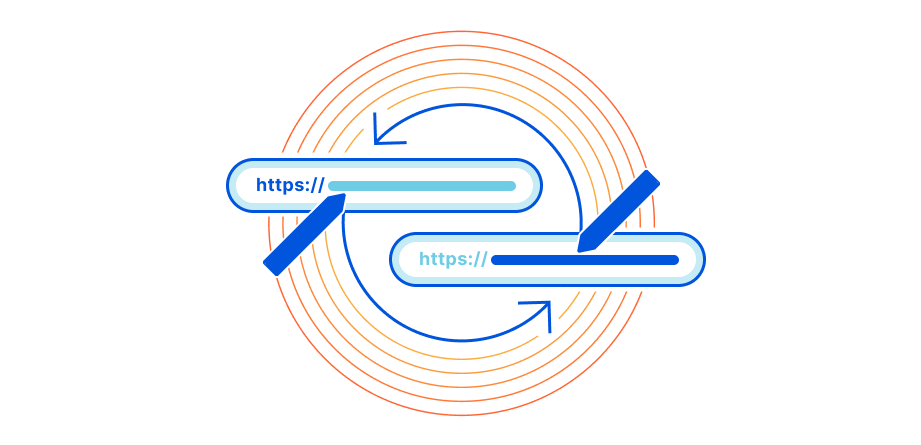Author Archives: Sam Marsh
Author Archives: Sam Marsh

This post is also available in Deutsch.

Speed Week 2023 is officially a wrap.
In our Welcome to Speed Week 2023 blog post, we set a clear goal:
“This week we will help you measure what matters. We’ll help you gain insight into your performance, from Zero Trust and API’s to websites and applications. And finally we’ll help you get faster. Quickly.”.
This week we published five posts on how to measure performance, explaining which metrics and approaches make sense and why. We had a deep dive on the latest Core Web Vital, “Interaction to Next Paint”, what it means and how we can help. There was a post on Time To First Byte (TTFB) and why it isn't a good way to measure good web performance. We also wrote about how to measure Zero Trust performance, and announced the Internet Quality page of Cloudflare Radar - giving everyone the ability to compare Internet connection quality across Internet Service Providers, countries, and more.
We launched new products such as Observatory, Digital Experiencing Monitoring and Timing Insights. These products give an incredible window into how your applications and websites are performing through the eyes of website visitors Continue reading


We understand the pain points associated with CDN migrations. That's why in late 2021 we introduced Turpentine, a project to the process of translating the old Varnish Configuration Language (VCL) into Cloudflare Workers with just a push of a button. After nearly two years of testing and user feedback, we’ve tailored the migration processes for different user groups.
Today, we are thrilled to relaunch Turpentine, and introduce Cloudflare's new Migration Hub. The Migration Hub serves as a one-stop-shop for all migration needs, featuring brand-new migration guides that bring transparency and simplicity to the process.
We also know that a large number of customers aren't comfortable doing migrations themselves. Years of built up business logic makes unpacking and translating CDN configurations between different vendors difficult and locks businesses into subpar products and services. To help these customers we have established a Professional Services group to ensure smooth migrations for customers transitioning to Cloudflare’s first-class products. Going forward, we plan to continue to invest resources in Turpentine to ensure that moving to any part of Cloudflare is easy and you have the help you need.
Cloudflare has gained immense popularity among businesses seeking to improve website performance, security, Continue reading


Today, we’re making the case for why Time To First Byte (TTFB) is not a good metric for evaluating how fast web pages load. There are better metrics out there that give a more accurate representation of how well a server or content delivery network performs for end users. In this blog, we’ll go over the ambiguity of measuring TTFB, touch on more meaningful metrics such as Core Web Vitals that should be used instead, and finish on scenarios where TTFB still makes sense to measure.
Many of our customers ask what the best way would be to evaluate how well a network like ours works. This is a good question! Measuring performance is difficult. It’s easy to simplify the question to “How close is Cloudflare to end users?” The predominant metric that’s been used to measure that is round trip time (RTT). This is the time it takes for one network packet to travel from an end user to Cloudflare and back. We measure this metric and mention it from time to time: Cloudflare has an average RTT of 50 milliseconds for 95% of the Internet-connected population.
Whilst RTT is a relatively good indicator of the quality of Continue reading


What we consider ‘fast’ is changing. In just over a century we’ve cut the time taken to travel to the other side of the world from 28 days to 17 hours. We developed a vaccine for a virus causing a global pandemic in just one year - 10% of the typical time. AI has reduced the time taken to complete software development tasks by 55%. As a society, we are driven by metrics - and the need to beat what existed before.
At Cloudflare we don't focus on metrics of days gone by. We’re not aiming for “faster horses”. Instead we are driven by questions such as “What does it actually look like for users?”, “How is this actually speeding up the Internet?”, and “How does this make the customer faster?”.
This innovation week we are helping users measure what matters. We will cover a range of topics including how we are fastest at Zero Trust, have the fastest network and a deep dive on cache purge and why global purge latency mightn’t be the gold star it's made out to be. We’ll also cover why Time to First Byte is generally a bad measurement. And what Continue reading


Cloudflare is used by a highly diverse customer base. We offer simple-to-use products for everything from setting HTTP headers to rewriting the URI path and performing URL redirects. Sometimes customers need more than the out-of-the-box functionality, not just adding an HTTP header - but performing some advanced calculation to create the output. Today they would need to create a feature request and wait for it to be shipped, write a Cloudflare Worker, or keep this modification ‘on origin’ - on their own infrastructure.
To simplify this, we are delighted to announce Cloudflare Snippets. Snippets are a new way to perform traffic modifications that users either cannot do via our productised offerings, or want to do programmatically. The best part? The vast majority of customers will pay nothing extra for using Snippets.
Users now have a choice. Perform the action via a rule. Or, if more functionality is needed, write a Snippet. Neither will mean waiting. Neither will incur additional cost (although a high fair usage cap will apply). Snippets unblocks users to do what they want, when they want. All on Cloudflare.
Snippets will support the import of code written in various languages, Continue reading


The Internet is a dynamic place. Websites are constantly changing as technologies and business practices evolve. What was front-page news is quickly moved into a sub-directory. To ensure website visitors continue to see the correct webpage even if it has been moved, administrators often implement URL redirects.
A URL redirect is a mapping from one location on the Internet to another, effectively telling the visitor's browser that the location of the page has changed, and where they can now find it. This is achieved by providing a virtual ‘link’ between the content’s original and new location.
URL Redirects have typically been implemented as Page Rules within Cloudflare, however Page Rules only match on the URL, rather than other elements such as the visitor's source country or preferred language. This limitation meant customers with a need for more dynamic URL redirects had to implement alternative solutions such Cloudflare Workers to achieve their goals.
To simplify the management of these more complex use cases we have created Dynamic Redirects. With Dynamic Redirects, users can redirect visitors to another webpage or website based upon hundreds of options such as the visitor's country of origin or language, without having to write a single line Continue reading


Managed Transforms is the next step on a journey to make HTTP header modification a trivial task for our customers. In early 2021 the only way for Cloudflare customers to modify HTTP headers was by writing a Cloudflare Worker. We heard from numerous customers who wanted a simpler way.
In June 2021 we introduced Transform Rules, giving customers a simple UI letting them specify what the custom HTTP header’s name and value is—either a static string (i.e. X-My-CDN: Cloudflare) or a dynamically populated value (i.e. X-Bot-Score: cf.bot_management.score).
This made the job much simpler, however there is still a good amount of thought required—with a number of potential drop-off points on the user journey. For example, in order to dynamically populate the bot score into the value of an HTTP request header, the user needs to know the correct field name. To find that they'll need to go to the documentation site, find the correct section, etc.
When we analyzed how our customers use Transform Rules we found a set of very common use cases in the data. Four of the top eight fields used were relating to bot management; customers wanting to have the Continue reading


The Internet is a dynamic place. Websites are constantly changing as technologies and business practices evolve. What was front-page news is quickly moved into a sub-directory. To ensure website visitors continue to see the correct webpage even if it has been moved, administrators often implement URL redirects.
A URL redirect is a mapping from one location on the Internet to another, effectively telling the visitor's browser that the location of the page has changed, and where they can now find it. This is achieved by providing a virtual ‘link’ between the content’s original and new location.
URL Redirects have typically been implemented as Page Rules within Cloudflare, up to a maximum of 125 URL redirects per zone. This limitation meant customers with a need for more URL redirects had to implement alternative solutions such Cloudflare Workers to achieve their goals.
To simplify the management and implementation of URL redirects at scale we have created Bulk Redirects. Bulk Redirects is a new product that allows an administrator to upload and enable hundreds of thousands of URL redirects within minutes, without having to write a single line of code.
Mail forwarding is a product offered by postal Continue reading

HTTP headers are central to how the web works. They are used for passing additional information between the client and server, such as which security permissions to apply and information about the client, allowing the correct content to be served.
Today we are announcing the immediate availability of the third action within Transform Rules, “HTTP Response Header Modification”, available for all Cloudflare plans. This new functionality provides Cloudflare users the ability to set or remove HTTP response headers as traffic returns through Cloudflare back to the client. This allows customers to enrich responses with information about how their request was handled, debugging information and even recruitment messages.
Previously, HTTP response header modification was done using a Cloudflare Worker. Today we’re introducing an easier way to do this without writing a single line of code.

Think of HTTP headers as the “luggage tag” attached to your bags when you check in at the airport.
Generally, you don't need to know what those numbers and words mean. You just know they are important in getting your suitcase from the boarding desk, to the correct airplane, and back to the correct luggage carousel at your destination.


“Which came first, the chicken or the egg?” It’s one of life's great questions. There are hundreds of articles published which conclude with eggs predating chickens by millions of years. Unfortunately, Cloudflare users don't have New Scientist on hand to answer similar questions.
Which runs first, Firewall Rules or Workers? Page Rules or Transform Rules? Whilst not as philosophically challenging, the answers to these questions are key to setting up your Cloudflare zone correctly. Answering them has become increasingly difficult as more and more functionality is added, thanks to our incredible rate of shipping products. What was once a relatively easy to understand traffic flow exploded in complexity with the introduction of products such as Workers, Load Balancing Rules and Transform Rules. And this big bang of product announcements is only accelerating each year.
To begin addressing this problem, we developed Traffic Sequence. Traffic Sequence is a simple dashboard illustration which shows a default, high-level overview of how Cloudflare products interact. Think of this as your atlas, rather than your black cab driver’s “Knowledge”. This helps you understand that London is in the south east of the UK, but not that it's quicker to walk than use Continue reading


HTTP headers are central to how the web works. They are used for passing additional information between the client and server, such as which security permissions to apply and information about the client, allowing the correct content to be served.
Today we are announcing the immediate availability of the second action within Transform Rules, “HTTP Request Header Modification”, available for all Cloudflare plans. This new functionality provides Cloudflare administrators with the ability to easily set or remove HTTP request headers as traffic flows through Cloudflare. This allows customers to enrich requests with information such as the Cloudflare Bot Management ‘Bot Score’ prior to being sent to their servers. Previously, HTTP request header modification was done using a Cloudflare Worker. Today we’re introducing an easier way to do this without writing a single line of code.

Think of HTTP headers as the “luggage tag” attached to your bags when you check in at the airport.
Generally, you don't need to know what those numbers and words mean. You just know they are important in getting your suitcase from the boarding desk, to the correct Continue reading


URLs are ugly. They are hard to read, difficult to memorise and often auto-generated for the benefit of the origin server - not the user.
Today we are announcing the immediate availability of Transform Rules for all Cloudflare plans. Transform Rules provide Cloudflare administrators with the ability to create URL rewrite rules. These rules transform HTTP requests as they flow through Cloudflare providing an interpretation layer between the human friendly and the computer friendly.
Imagine you are going on a much needed around-the-world trip and want to buy a copy of John Graham-Cumming’s book The Geek Atlas: 128 Places Where Science and Technology Come Alive to use as inspiration. Would the link https://www.travelbooks247.com/dp/0596523203/ make sense to you? Chances are the answer is no. It's hard for humans to understand these complex, contextless URLs.
This is why companies instead provide user friendly alternatives such as: https://www.travelbooks247.com/Geek-Atlas-Places-Science-Technology/dp/0596523203/ and use web servers as the interpreter. This interpretation is known as URL rewriting.
Large ecommerce retailers take HTTP requests to these human-friendly URLs and rewrite them using a simple pattern that strips the content Geek-Atlas-Places-Science-Technology/ before sending the HTTP request to the backend. The human readable hyperlink Continue reading